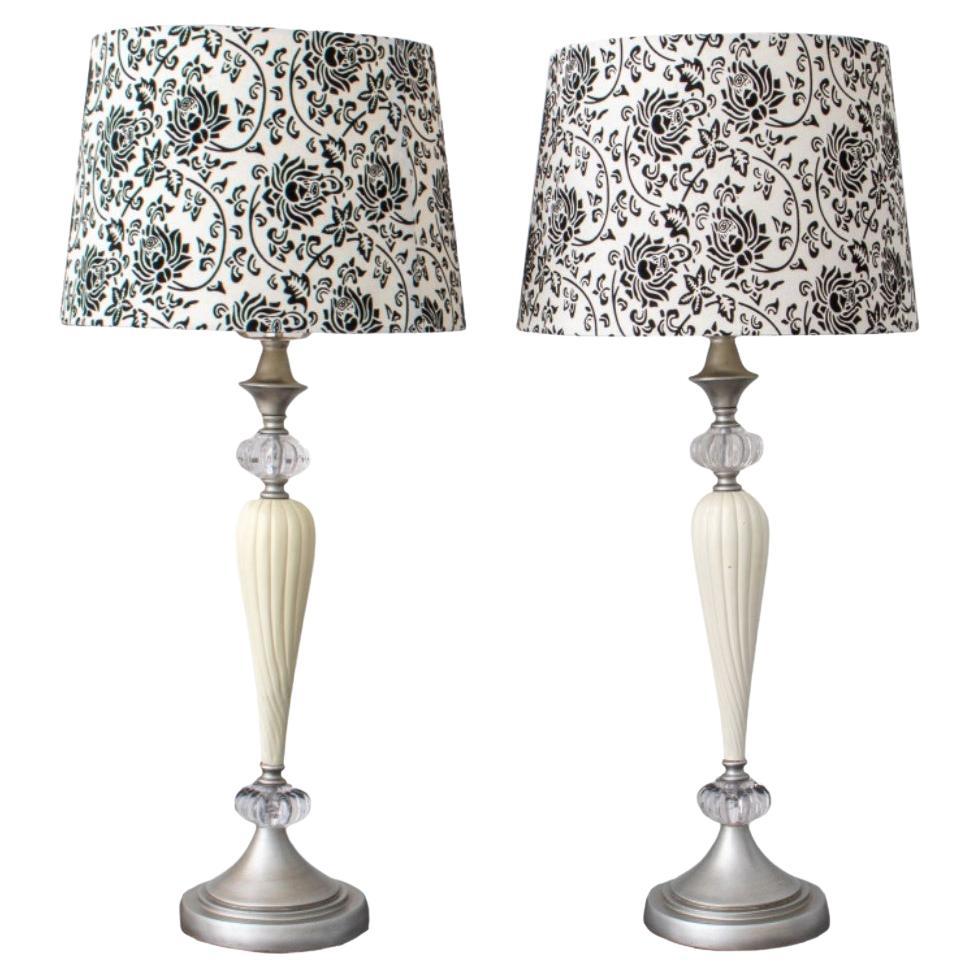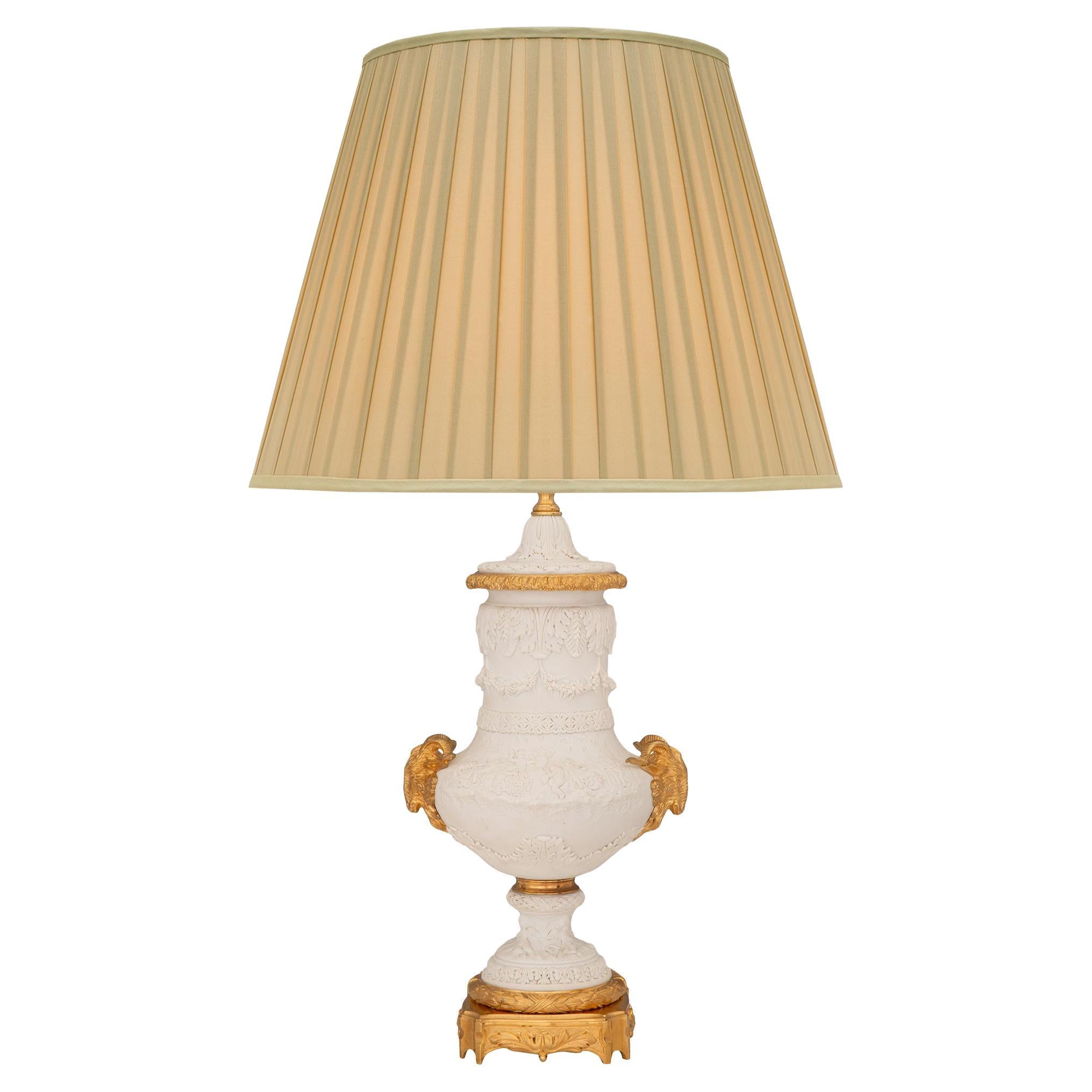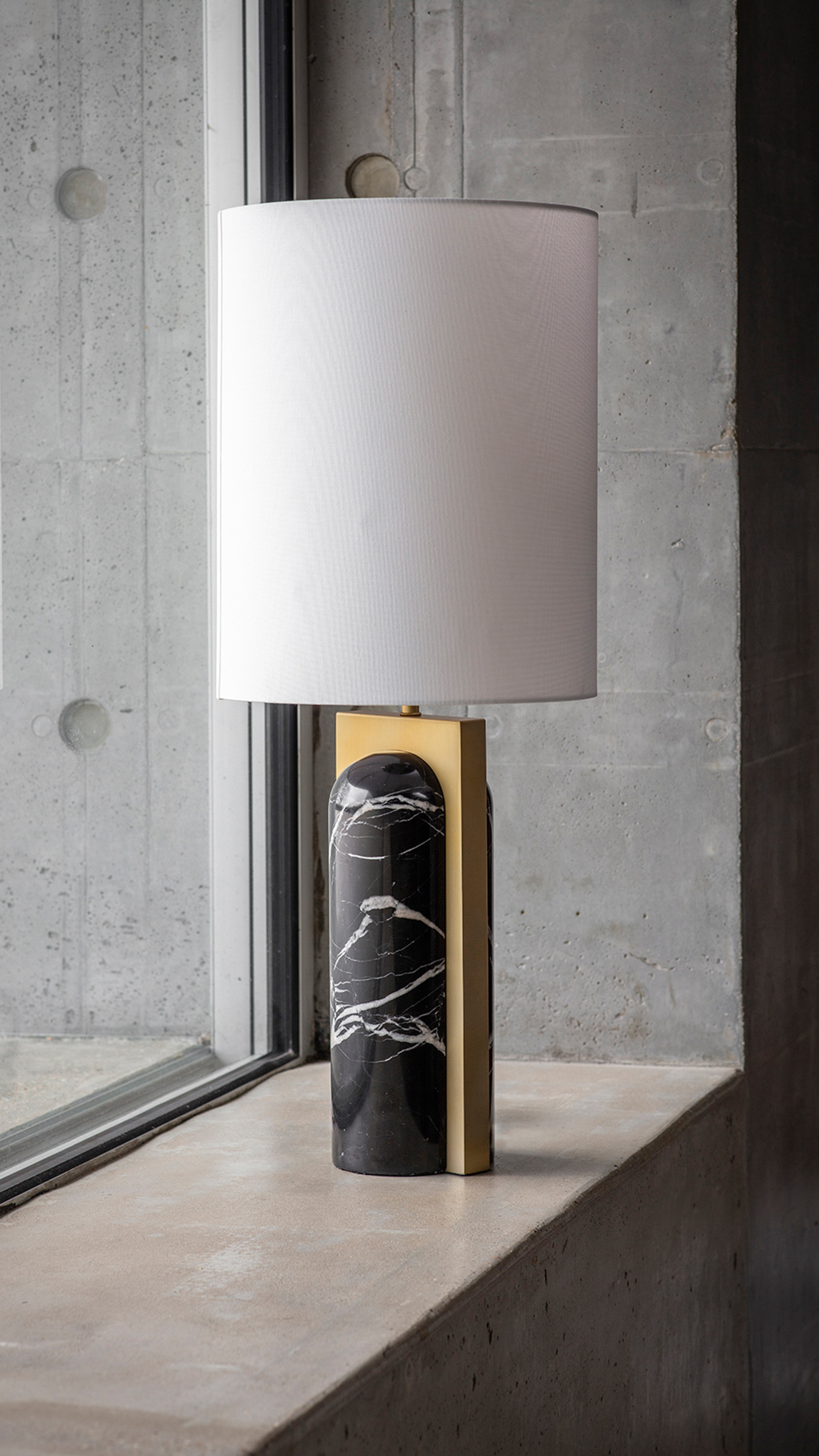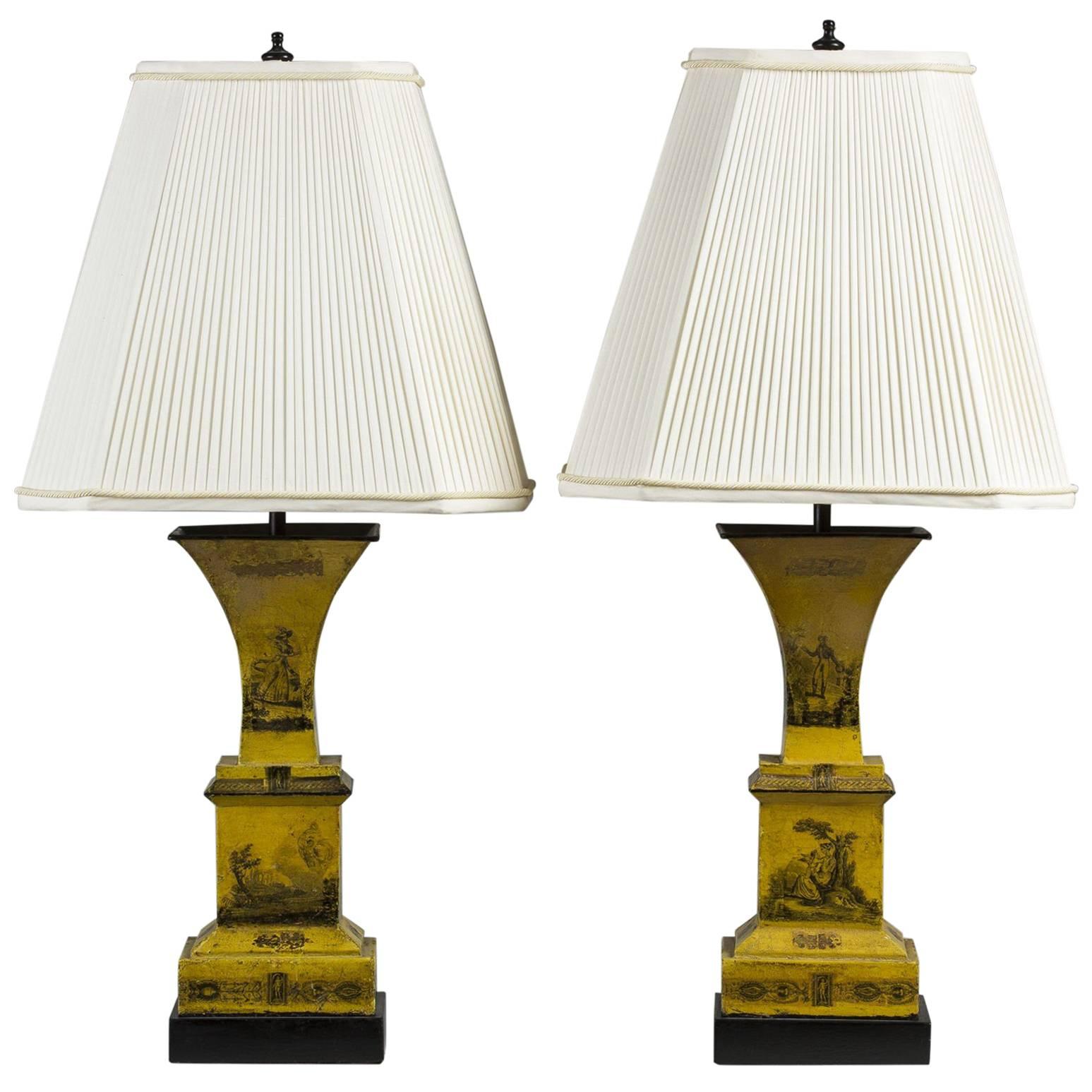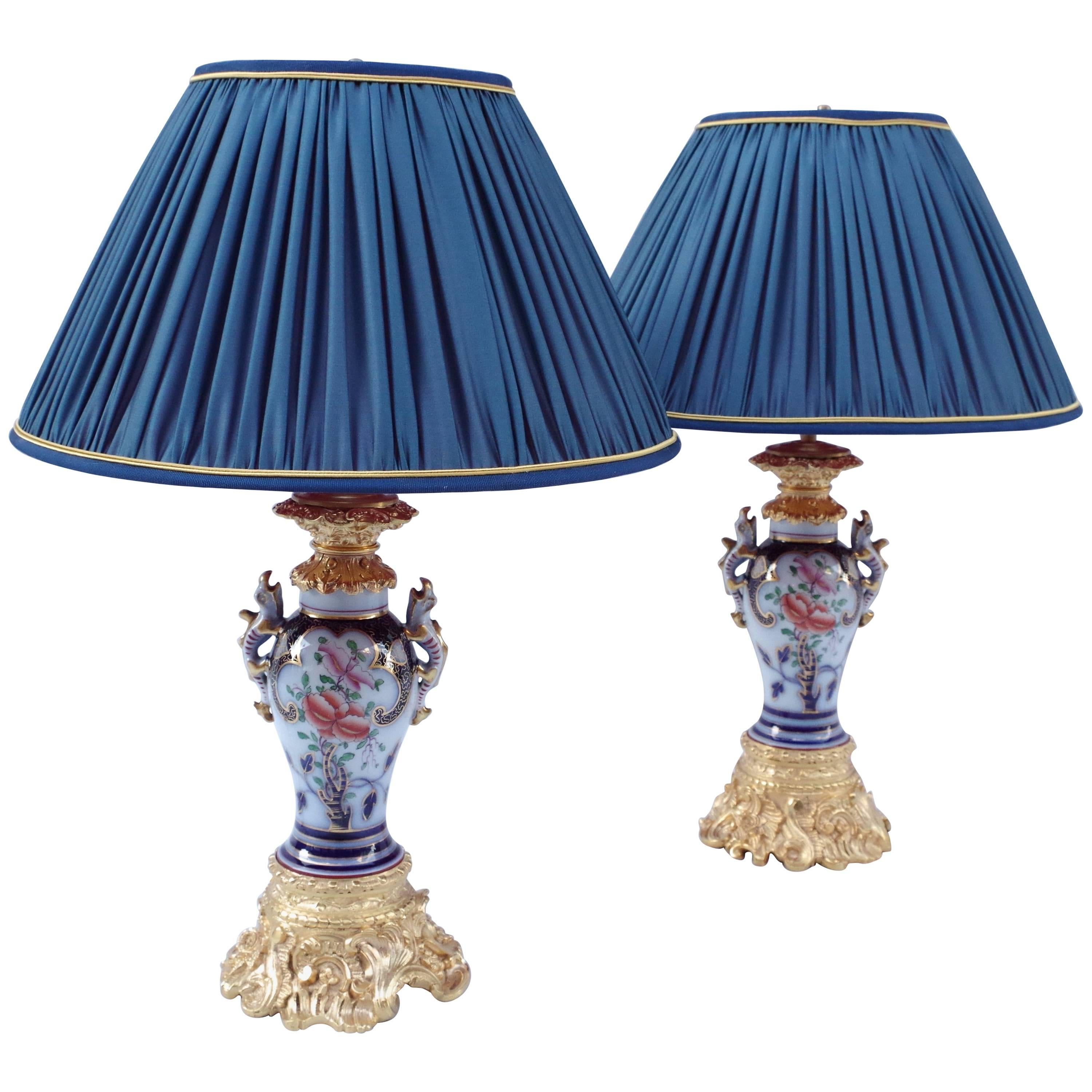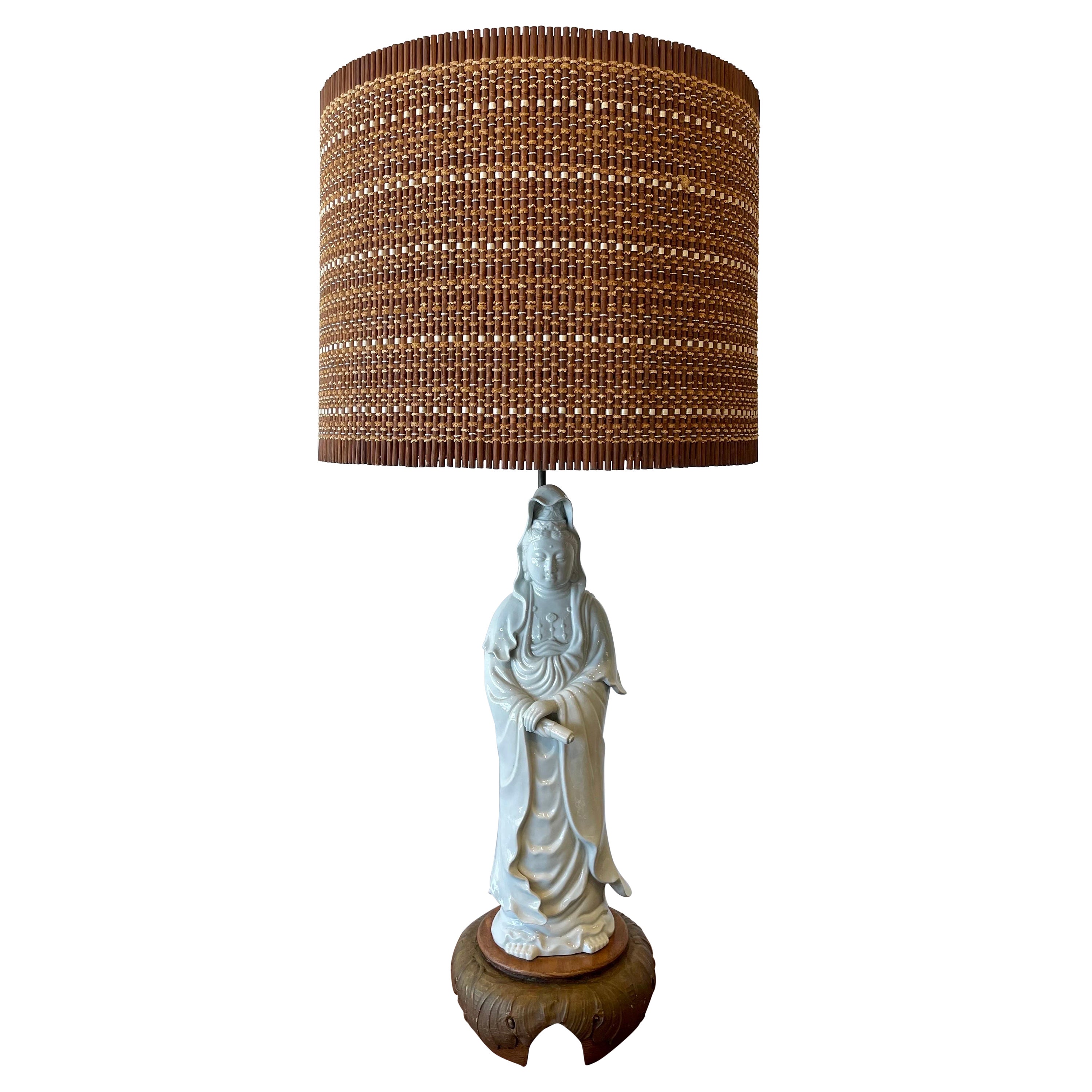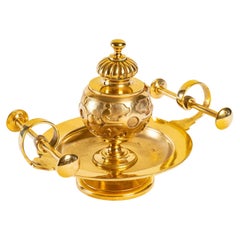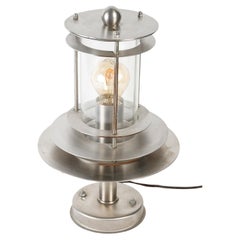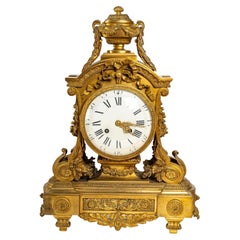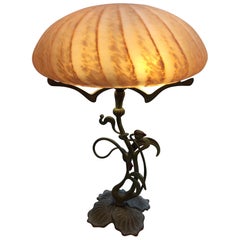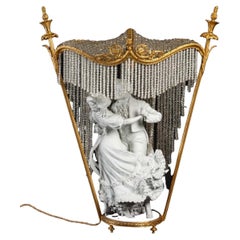
Romantic Lamp In Biscuit End XIXth Century
View Similar Items
Want more images or videos?
Request additional images or videos from the seller
1 of 12
Romantic Lamp In Biscuit End XIXth Century
About the Item
- Dimensions:Height: 18.9 in (48 cm)Width: 14.97 in (38 cm)Depth: 5.32 in (13.5 cm)
- Style:Louis XVI (In the Style Of)
- Materials and Techniques:
- Place of Origin:
- Period:
- Date of Manufacture:unknown
- Condition:Wear consistent with age and use.
- Seller Location:Saint-Ouen, FR
- Reference Number:1stDibs: LU1530231794362
About the Seller
4.8
Platinum Seller
These expertly vetted sellers are 1stDibs' most experienced sellers and are rated highest by our customers.
Established in 2003
1stDibs seller since 2015
278 sales on 1stDibs
Typical response time: 2 hours
More From This SellerView All
- Inkwell of the XIXth Century in Gilded BronzeLocated in Saint-Ouen, FR"Inkwell of the XIXth Century in gilded bronze" Inkwell, Napoleon III period, gilt bronze, 19th century. H: 15cm, W: 21cm, D: 14,5cm.Category
Antique 19th Century French Napoleon III Inkwells
MaterialsBronze
- Table Lamp in Steel, 20th Century Work.Located in Saint-Ouen, FRTable lamp in steel, 20th century work. Design lamp from the 20th century in steel. h: 39cm, d: 25cmCategory
20th Century French Mid-Century Modern Table Lamps
MaterialsSteel
- Louis XVI Style Clock of the XIXth CenturyLocated in Saint-Ouen, FRLouis XVI style clock of the XIXth Century Important clock of the XIXth century of Louis XVI style, in gilded bronze and porcelain. Dimensi...Category
Antique 19th Century French Louis XVI Table Clocks and Desk Clocks
MaterialsBronze
- Small Angel with Birds in Biscuit, End of the 19th CenturyLocated in Saint-Ouen, FRSmall angel with birds in biscuit, end of the 19th century Small biscuit group on a gilded brass base, mark "R". Small angel with birds, late 19th century or early 20th century. Me...Category
Antique Late 19th Century European Napoleon III Figurative Sculptures
MaterialsPorcelain
- Pair of Table Lamps in Chipped Mirrors, XXth Century.Located in Saint-Ouen, FRPair of Table Lamps in Chipped Mirrors, XXth Century. Pair of table lamps in bevelled and eglomised mirrors, 20th century. Each: H: 35cm, W: 24cm, D: 16cm Sold without shadeCategory
20th Century French Art Deco Table Lamps
MaterialsMirror
- Swiss Made Music Box from the End of the XIXth Century.Located in Saint-Ouen, FRSwiss made music box from the end of the XIXth century. Swiss made music box from the XIXth century, Napoleon III period, (small damage). h: 10cm, w: 30cm, d: 18cmCategory
Antique 19th Century Swiss Napoleon III Decorative Boxes
MaterialsWood
You May Also Like
- Pair of XIXth century lampsLocated in Isle Sur Sorgue, FRExceptional pair of régule late XIX th century lamps standing on green marble bases. Signatures at the bottom. Rests of polychromy for this pair figuring « les Amériques ». Grear qua...Category
Antique Late 19th Century Table Lamps
MaterialsMetal
- Pair of Porcelain Vases Ormolu-Mounted in Lamps by Gagneau Paris XIXth CenturyBy Gagneau ParisLocated in Saint-Ouen, FRPair of large Japanese Porcelain Cone Shape Vases with Imari decoration Important mounts in ormolu and gilded metal, the base decorated with a laurel wreath, the upper part of falling leaves and a frieze of knotted ribbon. The mounts signed Gagneau, 115 R. Lafayette. Circa 1860 With their original aluminium bulb cover and original gilding Vase it self Height 47 cm The Gagneau Company is one of the most famous lighting factories in Paris in the nine-teenth century, established in 1800 at 25 rue d'Enghien in Paris and later at 115 rue de Lafayette. She has participated in many exhibitions throughout this century. She began in 1819 with the Exposition des Produits de l'Industrie and later participated in the Universal Exhibitions where she was part of the jury in the category of art bronzes (class 25) at the Universal Exhibition in Paris in 1889. "Imari" was simply the trans-shipment port for Arita wares, from where they went to the for-eign trading outposts at Nagasaki. It was the kilns at Arita which formed the heart of the Japanese porcelain industry. Arita's kilns were set up in the 17th century, after kaolin was discovered in 1616. A popular legend attributes the discovery to an immigrant Korean potter, Yi Sam-Pyeong (1579–1655), although most historians consider this doubtful. After the discovery, some kilns began to produce revised Korean-style blue and white porcelains, known as Early Imari, or "Shoki-Imari". In the mid-17th century, there were also many Chinese refugees in northern Kyushu due to the turmoil in China, and it is said that one of them brought the overglaze enamel coloring technique to Arita. Thus Shoki-Imari developed into Ko-Kutani, Imari, and later Kakiemon, which are sometimes taken as a wider group of Imari wares. Ko-Kutani was produced around 1650 for both export and domestic market.Kutani Ware is characterized by vivid green, blue, purple, yellow and red colors in bold designs of landscapes and nature. Blue and white porcelain pieces continued to be produced and they are called Ai-Kutani. Ko-Kutani Imari for the export market usually adopted Chinese design structure such as kraak style, whereas Ai-Kutani for the domestic market were highly unique in design and are ac-cordingly valued very much among collectors. Ko-Kutani style evolved into Kakiemon-style Imari, which was produced for about 50 years around 1700. Kakiemon was characterized by crisp lines, and bright blue, red and green designs of dramatically stylized floral and bird scenes. Imari achieved its technical and aes-thetic peak in the Kakiemon style, and it dominated the European market. Blue and white Kakiemon is called Ai-Kakiemon. The Kakiemon style transformed into Kinrande in the 18th century, using underglaze blue and overglaze red and gold enamels, and later additional colors. Imari began to be exported to Europe when the Chinese kilns at Jingdezhen were damaged in the political chaos and the new Qing dynasty government halted trade in 1656–1684. Ex-ports to Europe were made through the Dutch East India Company, and in Europe the des-ignation "Imari porcelain" connotes Arita wares of mostly Kinrande Imari. Export of Imari to Europe stopped in mid-18th century when China resumed export to Eu-rope, since Imari was not able to compete against Chinese products due to high labor costs. By that time, however, both Imari and Kakiemon styles were already so popular among Eu-ropeans that the Chinese export porcelain copied both, a type known as Chinese Imari. At the same time, European kilns, such as Meissen and English potteries such as Johnson Bros. and (Royal) Crown Derby, also imitated the Imari and Kakiemon styles. Export of Imari surged again in late 19th century (Meiji era) when Japonism flourished in Europe.Thus, in the western world today, two kinds of true Japanese Imari can...Category
Antique 1880s French Japonisme Table Lamps
MaterialsBronze
$8,408 Sale Price / set30% Off - Romantic Table LampLocated in PARIS, FRThis table lamp diffuses a soft and pleasant light with its molten glass, polychrome finish.Category
Antique Early 19th Century Table Lamps
MaterialsBrass
$1,807 / item - Candelabra In Porcelain And Bronze, Japonisme, XIXth CenturyLocated in MARSEILLE, FRPorcelain candelabra painted with flower decoration, with a base and a bouquet of 7 lights, in bronze with a brown patina, in the Japanese or Escalier de Cristal style Good general ...Category
Antique 19th Century French Napoleon III Table Lamps
MaterialsBronze
- Rococo Romantic Table Lamp, PairLocated in New York, NYRococo Romantic pair of table lamps with silvered metal base enhanced with with and clear acrylic details, black and white shade. 27" H x 10" Diameter. Dealer: S138XX.Category
21st Century and Contemporary Modern Table Lamps
MaterialsMetal
$550 / set - French 19th Century Louis XVI St. Biscuit De Sèvres Porcelain and Ormolu LampLocated in West Palm Beach, FLA stunning and extremely decorative French 19th century Louis XVI st. Biscuit de Sèvres porcelain and ormolu lamp. The lamp is raised by a beautiful square ormolu base with concave c...Category
Antique 19th Century French Louis XVI Table Lamps
MaterialsOrmolu
Recently Viewed
View AllMore Ways To Browse
Antique Standard Lamps Lamps
Antique Standard Lamp Antiques
Antique Standard Lamp Lamps
Antique Standard Lamps
Standard Lamp Antique Furniture
Antique Standard Lamp Antique Furniture
Gold Gilded Lamp
Gilded Brass Lamp
Antique End Table Lamps
Bronze Standard Lamp
Antique Crystal Lamp Lamps
Antique Crystal Lamps Lamps
Romantic Period Furniture
Antique Bronze End Table
Brass Dome Lamp
Gilded End Table
Dancer Lamps
Antique Gold End Table




